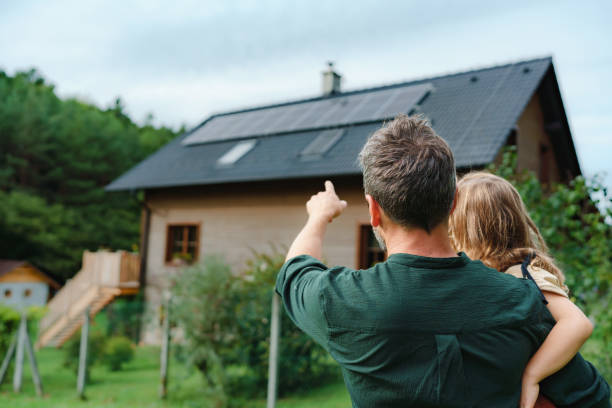Exploring Eco-Friendly Homes and Sustainable Communities
In a world where environmental consciousness is becoming increasingly crucial, the concept of green living has gained significant traction. Individuals, communities, and governments are all recognizing the importance of sustainable practices in preserving our planet for future generations. One aspect of this movement that has garnered particular attention is the development of eco-friendly homes and sustainable communities.
Understanding Eco-Friendly Homes
Eco-friendly homes, also known as green homes, are designed with a focus on minimizing their environmental impact throughout their lifecycle. These homes incorporate various sustainable features and technologies to reduce energy consumption, conserve water, and promote healthier living environments.
One of the key principles behind eco-friendly homes is energy efficiency. This includes features such as high-performance insulation, energy-efficient appliances, and renewable energy systems like solar panels. By reducing energy consumption, eco-friendly homes not only help mitigate climate change but also lower utility bills for homeowners.
Water conservation is another essential aspect of eco-friendly homes. Techniques such as rainwater harvesting, greywater recycling, and low-flow fixtures can significantly reduce water usage, easing the strain on local water resources and reducing utility costs.
Furthermore, eco-friendly homes prioritize indoor air quality by using non-toxic building materials and incorporating ventilation systems that promote fresh air circulation. This can lead to healthier living environments, particularly for individuals with respiratory issues or allergies.
The Rise of Sustainable Communities
Beyond individual homes, there is a growing trend towards developing entire sustainable communities. These communities are designed with environmental sustainability and social cohesion in mind, creating spaces where residents can live, work, and play while minimizing their ecological footprint.
Sustainable communities often feature amenities such as green spaces, community gardens, and pedestrian-friendly infrastructure to encourage outdoor activity and reduce reliance on cars. Additionally, they may incorporate mixed land use, allowing residents to access essential services and amenities within walking or biking distance, further reducing carbon emissions associated with transportation.
Moreover, sustainable communities prioritize social equity and inclusivity, striving to create environments that are accessible to people of all ages, incomes, and abilities. This may involve affordable housing initiatives, community engagement programs, and efforts to foster a sense of belonging among residents.
The Benefits of Green Living
Embracing green living through eco-friendly homes and sustainable communities offers numerous benefits on both individual and societal levels. From lower utility bills and improved health outcomes to reduced environmental impact and stronger community bonds, the advantages are manifold.
By investing in eco-friendly homes and sustainable communities, individuals can not only contribute to the global effort to combat climate change but also enjoy a higher quality of life and greater resilience in the face of environmental challenges. As the demand for sustainable living continues to grow, the development of eco-friendly homes and sustainable communities will play an increasingly vital role in shaping the future of our planet.
In conclusion, green living is not just a trend; it is a fundamental shift towards a more sustainable and equitable way of life. Through the adoption of eco-friendly homes and the creation of sustainable communities, we can pave the way for a brighter, greener future for generations to come.
This article explores the concept of green living, focusing on the development of eco-friendly homes and sustainable communities. It highlights the importance of energy efficiency, water conservation, and indoor air quality in eco-friendly homes, as well as the features and benefits of sustainable communities. Ultimately, it emphasizes the role of green living in mitigating climate change and promoting a healthier, more sustainable future.
Justin Brickman
RENE | Real Estate Negotiation Expert
SRS | Seller Representative Specialist
All City Real Estate
San Antonio, Texas
210-827-6020


